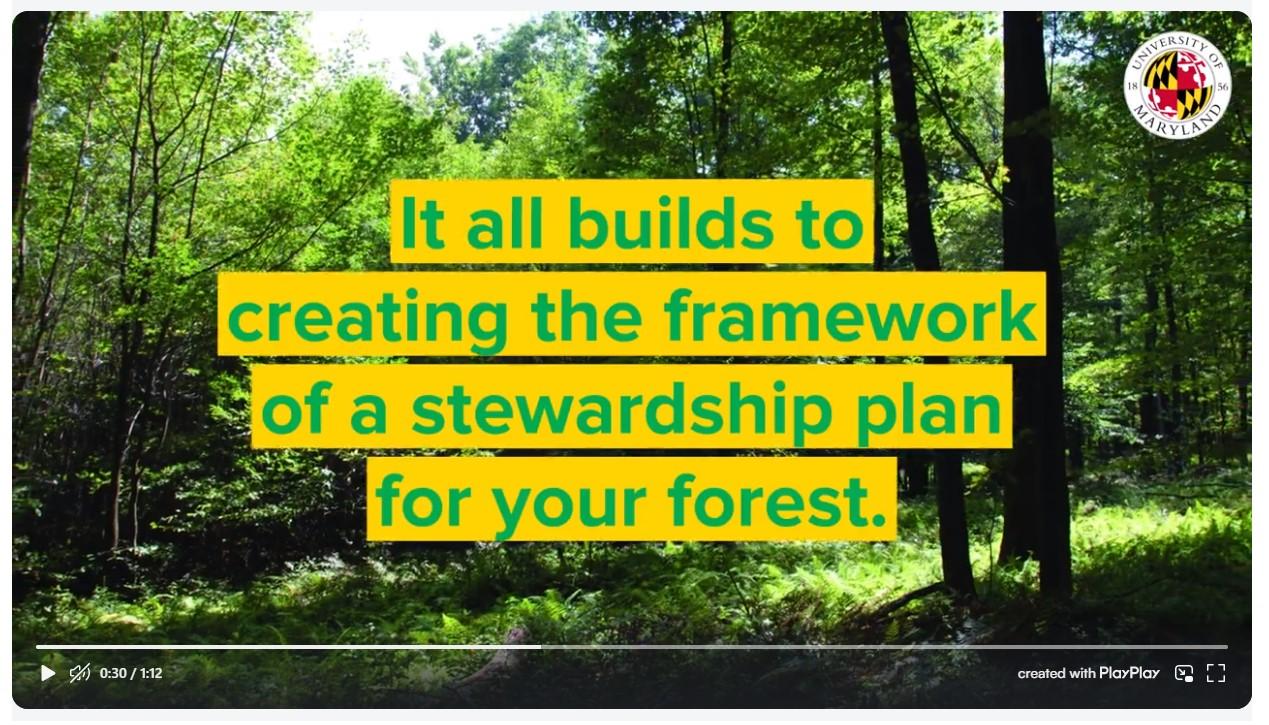Recently, a number of UME employees received access to a service called PlayPlay, which enables us to create short animated videos either from scratch or from one of many templates. It’s similar to working with PowerPoint in that you create a video from a storyboard of slides, and I found it quite effective. I’ve developed a number of videos for content within our two online courses and for promoting them on our website. You can see the one for “The Woods in Your Backyard” here and for “The General Forestry Course” here.

Crafting the latter involved a new PlayPlay feature: their “AI Assistant.” Curious to see what it would create for me, I entered a short description of the course, and its first slide showed a conference room with three doctors in the front row. And it added slow-motion video of a chainsaw in action to a slide that used my text “Manage your forest.” Clearly, there was room for improvement. I tried again with more detail and an expanded description of the course’s goals. This time, AI Assistant’s storyboard formed the nucleus of the video mentioned above.
Artificial Intelligence, or AI, has been in the news a great deal lately, but like a lot of technology, bits and pieces of it have been part of our lives for years. Do you send text messages, choosing the words suggested on the screen based on the first two or three letters you typed? That “predictive text” is AI. Do you have a TV remote control with a voice-activated function? Do you have an Amazon Alexa or similar device? Those are AI-based as well. It’s just that now, AI interfaces such as ChatGPT have become widely known, and many people have tried them for a variety of purposes. (I read that one user asked it to design a model railroad to fit a particular space; the AI created tracks with right angles. Autos can navigate that; railroads cannot.) While some individuals believe AI can help protect the world’s land, water, and air, its presence and development seems to have reached the point that others feel it may threaten their livelihoods and that it should be legislated.
What does this have to do with your woodlands? Apps that help assess your woodland’s health already exist. But can AI provide you with personalized management options? At this time, the answer is no. Remember, AI scours the sources it has been programmed to scour, and experts note that it struggles to notice the difference between what’s real and what’s wishful thinking. A recent blog post from the National Woodland Owners Association noted that AI has the amazing potential for stewardship education—but it’s not there yet.
Will a time come when someone develops a forest stewardship plan simply by typing an address into an app? A lot of the required information is already online. But I am not yet convinced that AI has reached the point that it can generate the next great American novel, much less complex management documents. There remains no substitute for hands-on, in-person, boots-on-the-ground work by human experts when it comes to managing your natural areas. And there remains no substitute for face-to-face interactions between experts and owners or managers to understand exactly what’s happening and what needs to be done in those woodlands.
A lot of it comes down to education and interpretation. I spoke with a landowner the other day who lives in Pennsylvania but who has property in southern Maryland, and who wanted to know who to talk to about harvesting some of the trees. Had AI taken the call, it might have noted the Pennsylvania phone number and replied with names of the nearest store selling chainsaws. Instead, I interpreted their request and asked: How large is the property? How many acres are in woodlands? And, in which county is it located? I learned that the property is large enough to qualify for a forest stewardship plan from the DNR Forest Service. I shared that the price of that service has not changed in many years. And I provided the contact information for the particular county involved. Yes, for the latter, I did have to go to the internet, but I knew exactly where to look on our website.
Any AI-based system at this point would not have asked these questions unless programmed to do so. Answering a question by asking other questions to provide worthwhile information is something AI can’t do. At least, not yet.